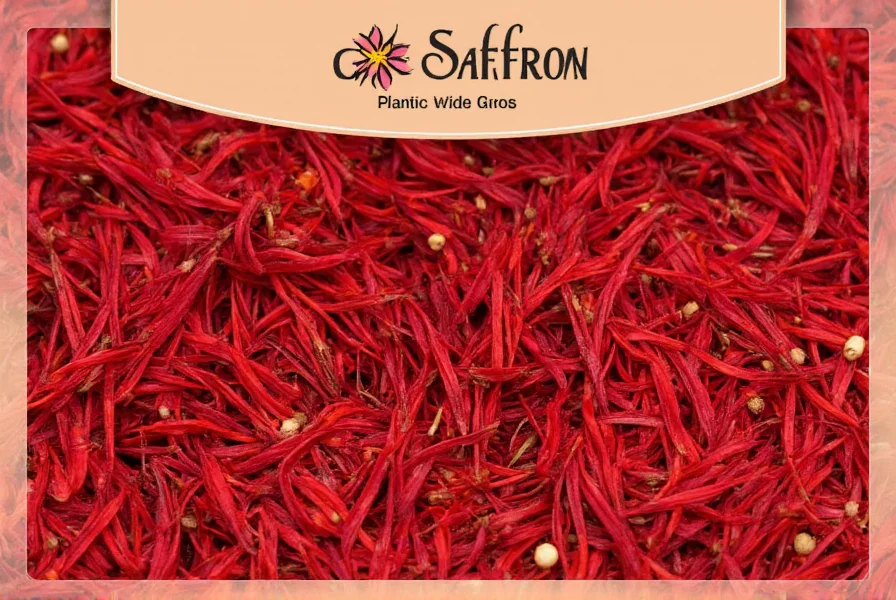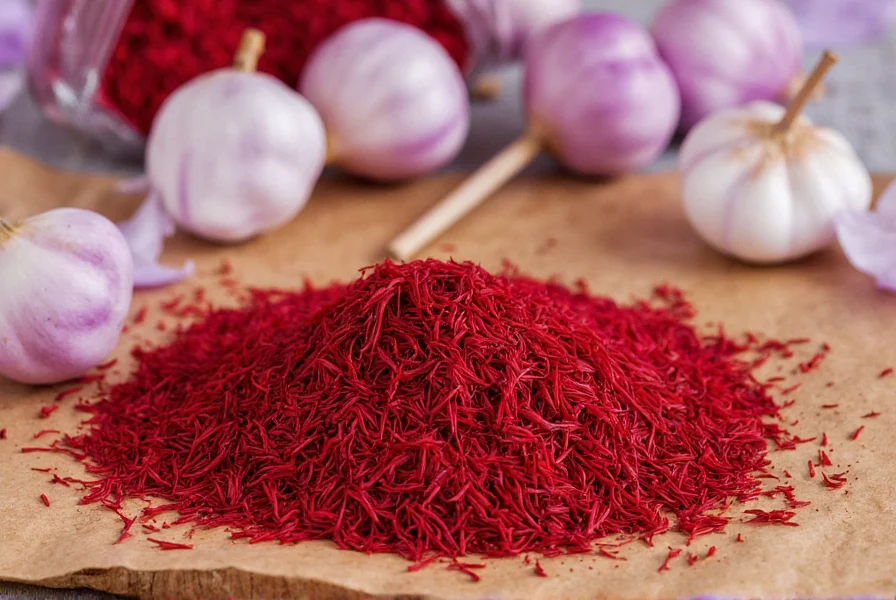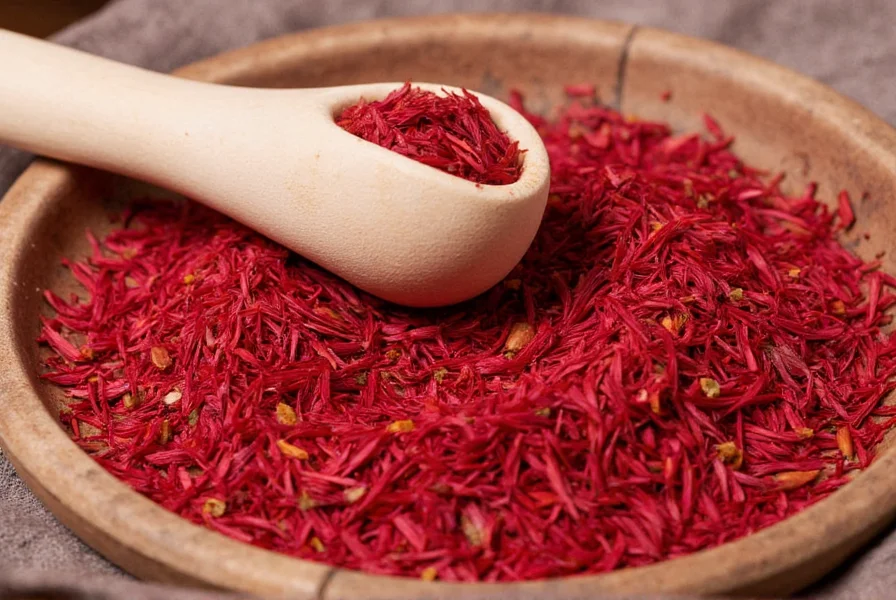Saffron's extraordinary value stems directly from its unique botanical origin. Unlike other spices that come from seeds, fruits, or bark, saffron is derived exclusively from the Crocus sativus flower's three crimson stigmas. This sterile triploid plant cannot reproduce naturally and must be propagated manually, contributing to saffron's premium status. Understanding this botanical relationship helps consumers identify authentic saffron and appreciate why it commands prices exceeding $5,000 per pound in premium grades.
The Exclusive Botanical Source of Saffron
Among the approximately 90 species in the Crocus genus, only Crocus sativus produces saffron. This domesticated crocus variety likely originated as a mutation of Crocus cartwrightianus in ancient Greece or Southwest Asia. The key distinguishing feature? C. sativus produces unusually long, vivid red stigmas that contain the precious compounds responsible for saffron's color, flavor, and aroma.
Each purple crocus flower yields just three stigmas, which harvesters must carefully pluck by hand at dawn when the flowers are still closed. It takes approximately 150,000 flowers (or 450,000 individual stigmas) to produce one kilogram of dried saffron. This labor-intensive harvesting process, combined with the flower's brief blooming season (typically October-November), explains saffron's extraordinary cost.

Identifying Authentic Saffron Characteristics
Genuine saffron from Crocus sativus exhibits specific physical and chemical properties that distinguish it from substitutes and adulterated products. The most reliable indicators include:
| Characteristic | Authentic Saffron | Common Substitutes |
|---|---|---|
| Stigma Shape | Tapered, trumpet-shaped with flared ends | Uniform threads (safflower) or straight fibers (dyed corn silk) |
| Color Release | Gradual golden-yellow hue in warm water | Immediate red color (safflower) or no color (paprika) |
| Aroma Profile | Honey-like with hay and iodine notes | Floral (safflower) or spicy (turmeric) |
| Chemical Test | Positive for crocin (color) and picrocrocin (taste) | Negative for saffron-specific compounds |
Geographical Influence on Saffron Quality
The terroir where Crocus sativus is cultivated significantly impacts saffron's chemical composition and sensory properties. Regions with protected designation of origin status maintain strict quality standards:
- Kashmiri saffron (Pampore, India) - Known for deep color strength (higher crocin content) and floral aroma due to high-altitude cultivation
- Spanish saffron (La Mancha) - Recognized for balanced flavor profile with Protected Designation of Origin certification
- Persian saffron (Khorasan, Iran) - Accounts for 90% of global production with varying quality tiers based on stigma完整性
Scientific analysis shows Kashmiri saffron typically measures 250+ on the ISO 3632 color absorbance scale, compared to 190-220 for premium Iranian grades and 150-180 for Spanish varieties. This measurable difference in crocin concentration directly correlates with the spice's coloring power in culinary applications.
Common Misconceptions About Crocus Saffron
Marketing terms often create confusion about saffron's botanical origins. "Crocus saffron" isn't a distinct variety - it's simply proper terminology acknowledging saffron's source. Many misleading claims circulate in the marketplace:
- "Spring crocus saffron" - Impossible, as C. sativus blooms exclusively in autumn
- "Wild saffron crocus" - C. sativus is entirely domesticated with no wild populations
- "Saffron from other crocus species" - No other crocus produces saffron's unique chemical profile
Consumers should look for ISO 3632 certification and detailed origin information when purchasing. Reputable suppliers provide documentation showing the saffron's classification as Category I (highest quality), II, or III based on laboratory measurements of crocin, picrocrocin, and safranal content.

Practical Applications of Premium Saffron
Understanding the crocus origin helps optimize saffron usage. The delicate compounds in genuine Crocus sativus stigmas require proper handling:
- Always steep threads in warm (not boiling) liquid for 15-20 minutes to maximize flavor extraction
- Use ceramic or glass containers - metal can react with saffron's compounds
- Store in airtight containers away from light to preserve potency for up to 2 years
- A pinch (about 20 threads) suffices for most recipes serving 4-6 people
Chefs specializing in saffron cuisine emphasize that proper preparation reveals why this crocus-derived spice remains irreplaceable. The complex flavor profile - simultaneously floral, earthy, and slightly bitter - transforms dishes in ways no substitute can replicate. From Spanish paella to Persian tahdig, authentic saffron creates distinctive culinary experiences rooted in its unique botanical origin.
Frequently Asked Questions
Why does saffron only come from crocus flowers?
Saffron exclusively comes from Crocus sativus because this specific crocus variety produces stigmas containing the unique combination of crocin (for color), picrocrocin (for flavor), and safranal (for aroma) that define authentic saffron. No other plant species contains this precise chemical profile.
How can I verify if my saffron comes from genuine Crocus sativus?
Authentic saffron verification involves multiple tests: examining the trumpet-shaped stigma tips, observing gradual golden-yellow color release in warm water (not immediate red), detecting honey-hay aroma, and checking for ISO 3632 certification documentation. Laboratory testing for crocin content above 190 on the absorbance scale confirms authenticity.
What makes Crocus sativus different from other crocus species?
Crocus sativus is a sterile triploid plant that cannot produce seeds and must be propagated manually through corms. It features unusually long, vivid red stigmas that contain saffron's distinctive compounds. Unlike other crocus species that bloom in spring, C. sativus flowers exclusively in autumn, and its stigmas are significantly larger and more intensely colored than those of related species.
Does the crocus variety affect saffron quality?
All commercial saffron comes from the same species (Crocus sativus), but regional cultivars significantly impact quality. Kashmiri varieties typically show higher crocin content (250+ ISO scale) for superior coloring strength, while Spanish strains often balance flavor compounds differently. The growing conditions, harvesting techniques, and processing methods create quality variations within the same botanical species.











 浙公网安备
33010002000092号
浙公网安备
33010002000092号 浙B2-20120091-4
浙B2-20120091-4